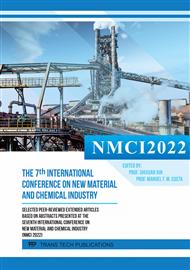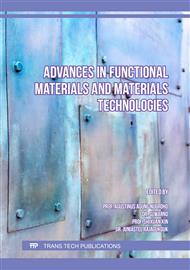p.115
p.121
p.131
p.139
p.145
p.153
p.165
p.173
p.183
Study on the Technology of Preparing Ceramsite from Coal Gangue
Abstract:
China's coal resources are extremely rich, and the degree of coal mining is high. During the formation of coal, a large amount of coal gangue will be produced, which not only accumulates land and wastes resources, but may also cause natural disasters such as fires. In this paper, coal gangue is used as the main raw material, and a certain amount of kaolin, steel slag and other auxiliary materials are added to prepare coal gangue ceramsite through a high-temperature sintering process. The research results show that as the sintering temperature increases, the porosity of the ceramsite decreases first. After increasing, the water absorption rate of ceramsite also decreases first and then increases with the increase of the firing temperature, while the compressive strength first decreases and then increases with the increase of temperature. With the increase of the holding time, the porosity of the ceramsite first decreases and then increases. The water absorption rate of the ceramsite also first decreases and then increases with the increase of the firing temperature, while the compressive strength decreases first and then increases with the increase of the temperature. Elevated. With the increase of coal gangue content, the porosity of ceramsite gradually decreases, the water absorption rate of ceramsite also gradually decreases, and the compressive strength gradually increases with the increase of coal gangue content. The optimization can be obtained, the coal gangue content (mass fraction) is 100%, the calcination process system is 1200°C, and the heat preservation time is 60min as the better parameters. At this time, the compressive strength is 29.57MPa and the porosity is 4.36%.
Info:
Periodical:
Pages:
183-189
Citation:
Online since:
January 2023
Authors:
Keywords:
Price:
Сopyright:
© 2023 Trans Tech Publications Ltd. All Rights Reserved
Share:
Citation:



